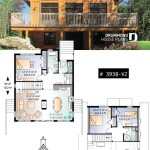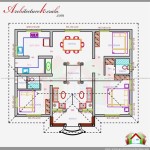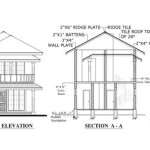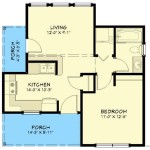Japanese Small House Design Plans: Essential Aspects to Consider
Japanese small house design plans offer a unique blend of functionality, aesthetics, and space optimization. Whether you're looking to build a cozy abode or maximize the potential of a limited space, understanding the core principles of Japanese architecture is crucial.
1. Simplicity and Minimalism
Japanese small house designs emphasize simplicity and minimalism. The emphasis is on creating a clean and uncluttered space that promotes a sense of serenity and tranquility. Clutter is kept to a minimum, and natural materials such as wood and stone are often used to create a warm and inviting ambiance.
2. Open Floor Plans
Open floor plans are a common feature in Japanese small house designs. Sliding doors (fusuma) and removable screens (shoji) allow for flexible room configurations and create a sense of spaciousness even in compact spaces. This flexibility allows homeowners to adapt their living areas to their changing needs.
3. Natural Light and Ventilation
Japanese architects prioritize natural light and ventilation in their designs. Large windows and sliding glass doors flood the interiors with natural light, creating a bright and airy atmosphere. Operable windows and skylights ensure proper ventilation, reducing the need for artificial lighting and cooling systems.
4. Multipurpose Spaces
To maximize space utilization, Japanese small house designs often incorporate multipurpose spaces. Tatami mats can serve as both flooring and sleeping areas, while built-in storage units and hidden compartments conceal clutter. This clever space planning allows for a variety of activities within a limited footprint.
5. Connection to Nature
Japanese architecture places great importance on the connection between indoor and outdoor spaces. Sliding doors often lead to patios or gardens, blurring the boundaries between the two. Natural materials and organic shapes bring the beauty of nature into the home, creating a harmonious living environment.
6. Zen Aesthetics
Zen aesthetics heavily influence Japanese small house designs. The principles of simplicity, balance, and asymmetry are evident throughout, from the clean lines of the architecture to the carefully placed decorative elements. The focus is on creating a space that promotes inner peace and meditation.
7. Sustainability and Energy Efficiency
Sustainability is an integral part of Japanese small house design. Energy-efficient appliances, passive solar design techniques, and the use of recycled materials help reduce the environmental impact of these homes. By maximizing natural light and ventilation, energy consumption is further minimized.
Conclusion
Japanese small house design plans offer a unique approach to space optimization, functionality, and aesthetics. By embracing the principles of simplicity, open floor plans, natural light, multipurpose spaces, and sustainability, homeowners can create cozy, serene, and energy-efficient living environments in even the most compact spaces.

Minimalist 778 Sq Ft Japanese Family Small House Style

Japanese Small House Design Plans Smallhouseplans Floor

Japanese Small House Plans Pin Up Houses Design

Get Japanese Small House Design Plans Pictures Traditional

Moving Company Quotes Tips To Plan Your Move Mymove House Floor Plans Japanese Flooring

Nice Traditional Japanese House Floor Plan Minimalist Home Design

Prefab Tree House Japanese Architecture Homes

Small House In Chibi Japan By Yuji Kimura Design

50 Square Meters Of Japanese Small House So The Design Is Beautiful And Big

Traditional Japanese House Floor Plans With Drawings Upgradedhome Com








